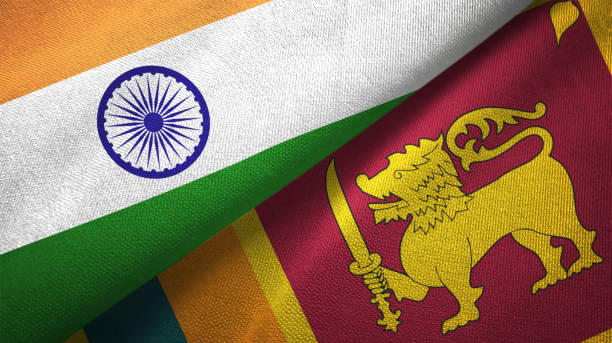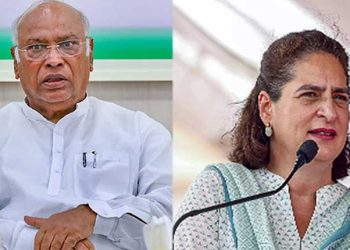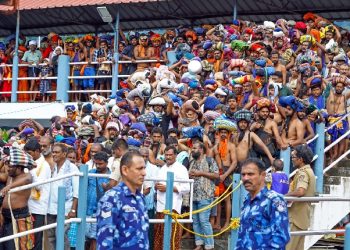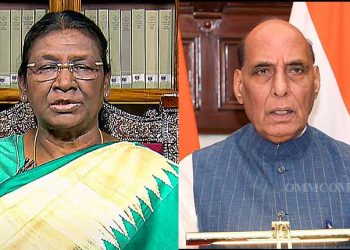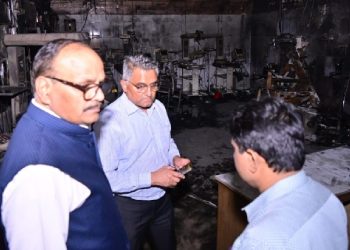Colombo: Sri Lanka enjoyed the best human development indicators in South Asia till now. Covid-19 has direct impact on Sri Lankan tourism, supply chains, and remittances; and its economy but the country is facing a crisis because no lucrative economic activity took off despite large Chinese mega-project investments and borrowing spree.
Sri Lankans have been protesting over the unavailability of food and fuel for the past many weeks, as it has stopped imports due to lack of foreign exchange.
The forex crisis has been building up for the past many months, has resulted in serpentine queues for fuel, soaring food costs, long power outages and unavailability of medicines.
Sri Lankan President, Gotabaya Rajapaksa, declared a nationwide public emergency following violent protests and also removed his brother and Finance Minister Basil Rajapaksa for grave mismanagement of the economy.
Also, Members of Parliament from parties aligned with Rajapaksa’s ‘Sri Lanka Podujana Peramuna’ led coalition announced they would now independently represent themselves.
The Governor of Sri Lanka’s central bank also has submitted his resignation as the country faces its worst economic crisis in decades.
Several economic refugees from Sri Lanka have already reached India, escaping unemployment and skyrocketing inflation and thousands more expected to reach India in coming weeks.
In this crisis, India came forward to assist Sri Lanka and provided a $2.4-billion package of financial assistance. Sri Lanka has also signed a $1 billion credit line for importing essential items such as rice, wheat flour, pulses, sugar and medicines and other life sustaining goods and services.
In addition to the credit lines, India this year extended Sri Lanka $400-million currency swap and a $500-million credit line for fuel purchases to Sri Lanka.
The Indian Oil Corporation released 6,000 metric tonnes of diesel under a $500 million credit line to Sri Lanka as it pitches in to mitigate the spike in power cuts in the island nation.
India agreed to help ease crippling shortages of rice also. India have started loading 40,000 tonnes of rice for prompt shipment to Sri Lanka in the first major food aid which could help Colombo bring down rice prices, which have been doubled in a year, adding fuel to the unrest.
Sri Lanka has become a net importer of rice as its production fell after Colombo banned all chemical fertilisers in 2021 to promote organic farming, a move that was later reversed.
In November 2021, over 100 tonnes of nano-nitrogen liquid fertilisers was given by India to Sri Lanka as the Rajapaksa government stopped the import of chemical fertilisers.
It is important to note that a $12 million project to build wind turbines on three small islands in the Palk Strait between southern India and Sri Lanka was awarded to a Chinese firm in 2019, with funding lined up from the Asian Development Bank (ADB) effectively replacing the Chinese venture cleared by Colombo.
Now, Indian will work on this energy project coming up in Sri Lanka’s north and east. Recently, the Chinese ambassador to Sri Lanka, Qi Zhenhong, expressed Beijing’s displeasure over the scuttling of the project and warned it would send a negative signal to potential foreign investors.
Meanwhile, India and Sri Lanka have also agreed to set up a Maritime Rescue Coordination Centre (MRCC), signalling greater defence sector collaboration with a $6 million Indian grant.
Both the countries also discussed cooperation between its Navy and Coast Guard in patrolling as well as existing hotline between the coast guards.
The related operational issues including cooperation in tracking poaching, prevention of environmental damage due to bottom trawling, addressing grievances of fishermen on either side was also discussed.
Also, the Sri Lankan Navy has entered an agreement with Goa Shipyard Ltd, India for the construction of a Floating Dock with Colombo eyeing to expand its defence ties with India.
According to Sri Lanka Navy, the Floating Dock is a much-needed requirement for the navy, and it will be delivered to Sri Lanka as a grant from India.
It is paramount to annually direct the vessels and boats of the Sri Lanka Navy for underwater maintenance and repairs in order to increase their efficiency for service.
This will also help Sri Lankan Navy to manifest operational prowess by conducting patrols, maritime policing, reconnaissance, surveillance, search and rescue, humanitarian assistance, disaster relief, and pollution control missions.
India will also help develop fisheries harbours in the Northern Province, in addition to supporting schools in the southern Galle district with computer laboratories and smart boards, extending a grant for Sri Lanka’s Unique Digital Identity project.
Further, on Sri Lanka’s long-pending Tamil question, India has welcomed the recent talks between President Gotabaya Rajapaksa and the Tamil National Alliance (TNA), the largest group of legislators elected from the north and east.
The government has assured in the talk to address long-pending Tamil concerns, promising to look into the release of long-detained suspects arrested under Sri Lanka’s widely-criticised terrorism law, land grabs by state agencies, enforced disappearances, 13th Amendment implementation, diaspora investment and development of the north and east.
However, the government postponed discussing the TNA’s core demand for a political solution through a new constitutional arrangement devolving more powers to the provinces. TNA is looking for the realisation of the Tamil aspirations for equality, justice, peace, and dignity within the framework of a united Sri Lanka.
India’s approach is to help Sri Lanka on humanitarian grounds, exactly the way it extended to the Afghan people and also not let the country fall into the trap of external powers like China.
The Sri Lankan crisis would also impact India’s SAGAR doctrine, Security and Growth for all in the Region,19 which primarily focuses on Sri Lanka and Maldives among other nations which lays stress on maritime security, sustainable development, cooperation among neighbours and economic growth in the Indian Ocean region.
The Sri Lankan crisis also proved that the mega Chinese projects like Hambantota Port, the Colombo Port City project and the Mattala Rajapaksa International Airport have not helped the country’s economy and the people but serving only Chinese interests in the Indian Ocean.
The general masses now realise that the wide criticism of these projects were valid.
India’s image has improved considerably among Sri Lankan who feel that India is a friend indeed.
It’s the right time for Sri Lanka to reset its foreign policy priorities which is more tilted towards China.
Reiterating its commitment to being the immediate responder to the crisis in the subcontinent, India must urge the international community including its QUAD partners to chip on priority basis.
(IANS)



